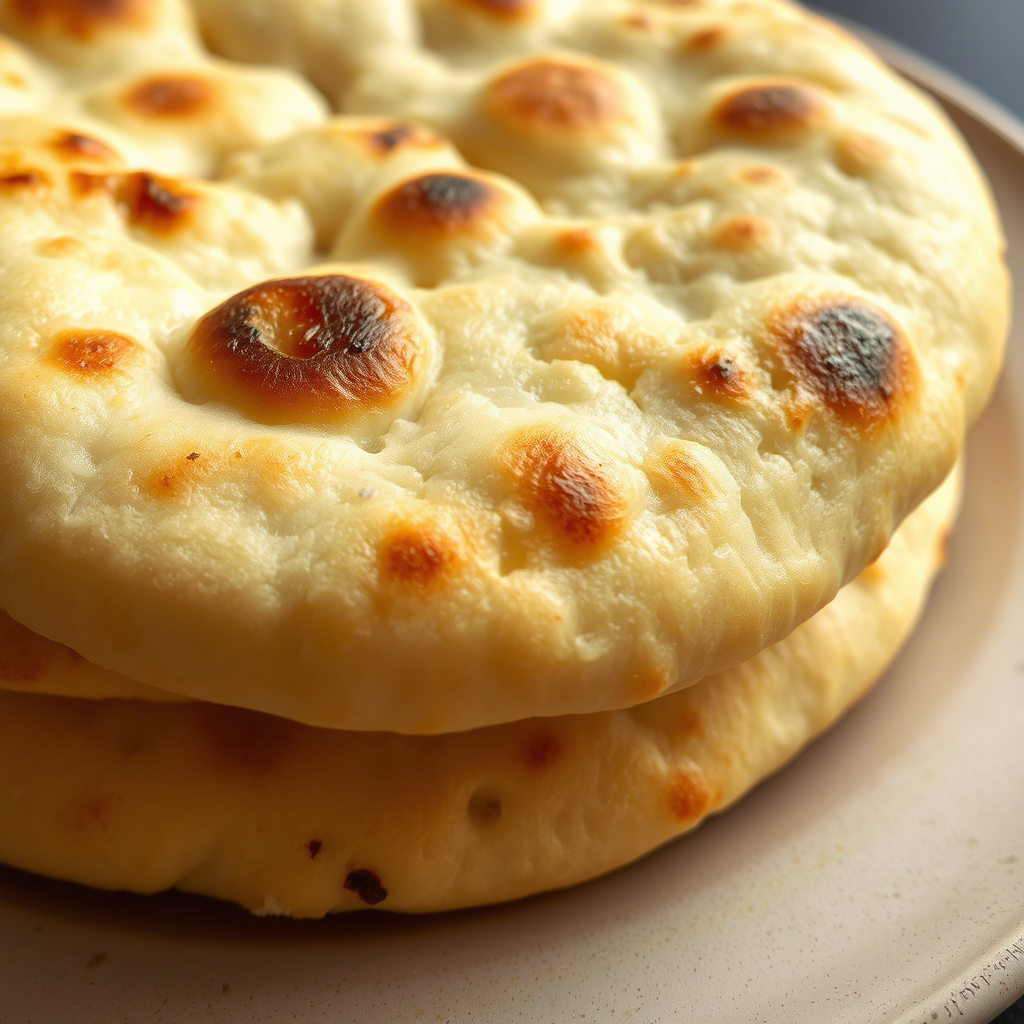There’s nothing quite like the warm, pillowy texture of freshly baked naan straight from the tandoor. This traditional Indian flatbread has captured the hearts—and stomachs—of food lovers worldwide.
Whether served as an accompaniment to rich curries or enjoyed on its own with a dollop of butter, naan is more than just bread; it’s an experience.
But what if you could bring that authentic taste into your kitchen without needing a professional tandoor? In this article, we’ll explore everything you need to know about making delicious homemade naan, step by step.
From understanding its origins to mastering simple techniques, let’s dive into why naan deserves a place in every home cook’s repertoire.
The Origins and Cultural Significance of Naan
Naan traces its roots back thousands of years to the Indian subcontinent, where it was traditionally cooked in clay ovens called tandoors . Historically, naan wasn’t merely a staple food but also a symbol of hospitality and celebration.
Often prepared for special occasions, it reflected the generosity and warmth of Indian culture. Today, naan remains one of the most beloved dishes globally, transcending borders and cultures.
What makes naan unique is its combination of ingredients and cooking method. Unlike other flatbreads, naan incorporates yogurt, which gives it a tender and slightly tangy flavor.
Plus, the high heat of the tandoor creates those signature charred spots that add depth and aroma. While not everyone owns a tandoor, modern adaptations allow us to replicate this magic at home using conventional ovens or even stovetops.
Ingredients You Need for Perfect Naan
Making naan doesn’t require an extensive list of ingredients—it’s all about quality and balance. Here’s what you’ll need:
- All-purpose flour (or whole wheat flour for a healthier option)
- Active dry yeast
- Warm water
- Yogurt (plain, unsweetened works best)
- Sugar (just a pinch to activate the yeast)
- Salt
- Ghee or clarified butter (optional, but highly recommended for authenticity)
- Oil or melted butter for brushing
One common mistake beginners make is overworking the dough. For soft and fluffy naan, knead gently until smooth but don’t overdo it. Additionally, letting the dough rise properly is crucial. A warm, draft-free environment ensures the yeast does its job effectively, resulting in light and airy bread.
Techniques to Master Homemade Naan
If you’re intimidated by baking, fear not! Making naan is surprisingly straightforward once you get the hang of it. Start by preparing your dough and allowing it to rest for at least an hour.
Once risen, divide the dough into small balls and roll them out into oval shapes. If you have access to a cast-iron skillet or griddle, preheat it on medium-high heat. Alternatively, use your oven’s broiler function to mimic the intense heat of a tandoor.
Here’s a tip: brush each naan generously with ghee or butter while it cooks. This not only enhances the flavor but also gives it that irresistible golden sheen. For added flair, sprinkle garlic powder, chopped cilantro, or sesame seeds before cooking. Experimenting with toppings can turn plain naan into a gourmet delight!
Troubleshooting Common Issues
Even experienced cooks encounter challenges when trying new recipes. If your naan turns out dense instead of fluffy, chances are the dough didn’t rise long enough or the yeast wasn’t activated correctly. Always check the expiration date of your yeast and ensure the water used isn’t too hot, as this can kill the yeast.
Another issue might be uneven cooking. To avoid burnt edges and undercooked centers, adjust the distance between the naan and the heat source.
When using a skillet, flip the naan halfway through cooking to achieve consistent browning. Lastly, resist the urge to stack cooked naans together immediately—they’ll steam themselves and lose their crispiness. Instead, cover them loosely with a clean cloth to keep them warm.
Why Naan Should Be Your Go-To Comfort Food
Beyond its delectable taste, naan offers versatility that makes it perfect for any meal. Pair it with spicy lentil dal, creamy paneer tikka, or even a bowl of soup for a comforting twist.
Its mild flavor profile allows it to complement both bold and subtle dishes effortlessly. Moreover, making naan at home can become a fun family activity, especially when kids help shape the dough or choose toppings.
Think about how much joy there is in sharing fresh-baked naan with loved ones. It’s not just about the food—it’s about creating memories around the table. So whether you’re hosting a dinner party or enjoying a quiet night in, naan adds a touch of elegance and comfort to any occasion.
Conclusion
In conclusion, traditional Indian naan is more than just a recipe—it’s a journey into the heart of Indian cuisine. By following these easy steps, you can create authentic naan right in your kitchen, impressing friends and family alike.
Remember, practice makes perfect, so don’t be afraid to experiment with flavors and methods until you find your ideal technique.
Now that you’ve learned the secrets behind great naan, why not give it a try? Share your creations with others and inspire them to join in the culinary adventure. And don’t forget to leave a comment below telling us how your naan turned out—we’d love to hear from you!

Thayná Alves is an influential digital content creator who has carved out a significant space in the realms of technology, finance, and entrepreneurship. Through her blog, Newbacker.com , she stands out as an authentic and accessible voice for individuals seeking practical information about investments, innovation, and emerging trends in the financial market.

